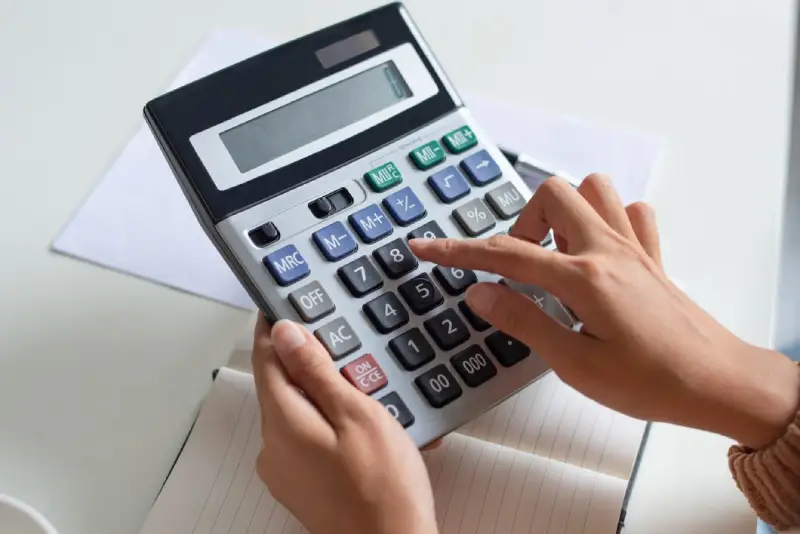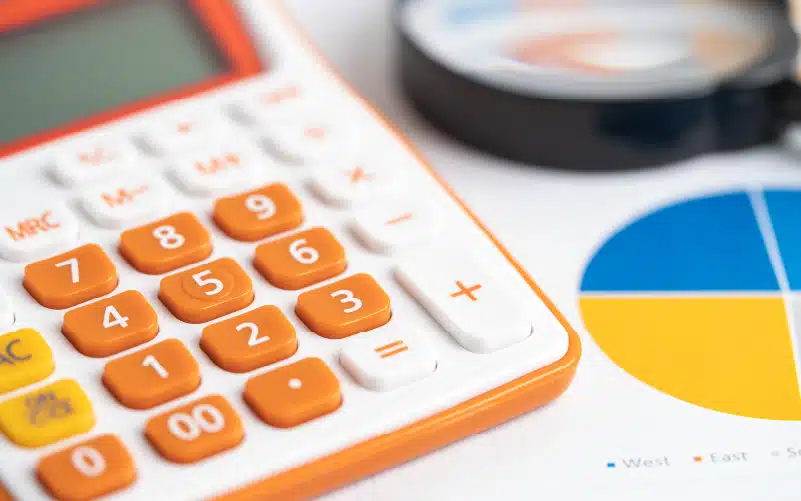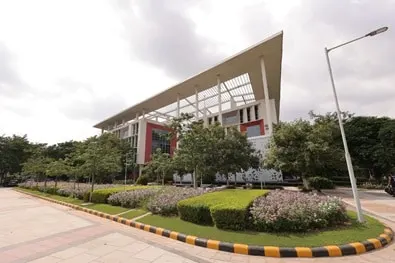Blogs


How to Convert CGPA into Percentage in BTech Engineering?

It has always been a complex task for most students to determine how to calculate B.Tech percentage from CGPA. However, the truth about how to convert CGPA into percentage in BTech is that it’s quite an easy process. But, most students remain unaware of the process and wonder how to calculate B.Tech percentage rightly.
This blog features some of the easiest tricks on how to calculate B.Tech percentage from CGPA, which stands for Cumulative Grade Point Average. Hence, it is recommended for all the students to go through the processes mentioned below to gain an understanding of how to convert CGPA into percentage in BTech.
Understanding the concept of CGPA
At first, let us understand what the GPA grading scale means and how it has been implemented in the Indian grading system. During your courses in colleges and Universities, you will often come across the term GPA.
GPA is an abbreviation for Grade Point Average which is a standardized method of calculating an average grade of a student over a definite period of time like a term on a semester.
GPA is calculated by dividing the average marks of a student by the total credit hours that have been attended. CGPA, on the other hand, is an abbreviation for Cumulative Grade Point Average.
It is specifically used in order to calculate the average performance of a student all throughout their academic session. To calculate CGPA you have to divide the total score for all subjects obtained by the total number of attended credit hours all throughout the semesters.
GPA and CGPA are marked by a number in opposition to percentages and grades and has been assigned under the Indian grading system.
How can the CGPA system be compared to the Indian grading system?
If the Indian students are going abroad, then they will find that the grading system there is quite different from here.
The Indian schools and colleges academic performance is judged with either the percentage system or the 10 point CGPA system.
The percentage system is the one where the original marks obtained by the student are converted to a percentage, after which they are assigned to a category of ranks known as divisions.
Distinction means above 75%, the first division means between 60 and 75%, the second division means 50 and 60% and the third division means 40 to 50%.
In the case of the CGPA, the student is awarded in point form. For example, if an individual earns the letter A, then it is 9 points in the CGPA system.
In many of the abroad platforms like America and Canada, they considered a minimum cutoff GPA as an essential requirement to get enrolled in the bachelors and masters degree programs.
Advantages of the CGPA system in education
-
It takes the pressure off the students at every level
Already the students are under a lot of pressure in order to do their best according to his or their capability. In general, the gradation system does not focus on the students' actual scores in an official manner so, therefore, each and every student is not segregated on the basis of their marks obtained.
In the continuous rat race, this gradation system does not let any student feel inferior because of one or two fewer marks obtained.
-
Relieves the burden of trivial issues
It also relieves the students from becoming fussy about getting a better grade like an O. It helps the students to have the necessary education without indulging much in the rat race.
This is done in order to make the students into actually responsible citizens of the future and not just machines who would run for marks. The best fact about it is that they will receive the same recognition in the CGPA grading system as the percentage system but without the burdensome pressure.
-
Learning becomes fun
The main disadvantage of the percentage method is that many of the students are segregated from the average and below-average students but it leads to intense pressure among each and every individual who are competing against each other. The learning that is supposed to be a fun task, will remain a fun task because of the CGPA system.
-
No inferior feelings
Because of the CGPA system, the students are grouped according to the different kinds of grading scales. For example, a common grading scale is B- 80 to 89. Every student who has got any number between 80 to 89 will be flocked against the gradation B. A student who gets 81 will not feel inferior to the students who have obtained 89.
-
Every aspect gets measured
The CGPA system has been able to introduce the idea of measuring the knowledge of the students based on the project internal assignments and their answering ability in class. This means that the students are being judged only on the basis of their theoretical knowledge but also on the basis of their overall performance.
-
Analyzing the strengths and weaknesses
This system gives the students an idea about their weaknesses and strengths instead of making them feel superior-inferior to the other students. Knowing approximately which subject their weak spots are, the students can easily decide on which parts they should focus on. The CGPA helps them understand the total grades so that they can know their forte and choose accordingly.
-
It makes the classwork easier
It is true that the gradation system makes the work a lot easier. For example, if a student knows that getting a C will give him or her enough marks to scrape through the class assignment section, he or she will focus only on getting that grade and will not fuss much over it. Along with getting high grades, it is also important that's the students are not being made to toil much, when the requirement is only a minimum grade.
-
Classification of the student
With the help of the system, it becomes far easier to classify the students for the teachers and to categorize them into groups such as average, good and below-average ones so that the required amount of focus can be given to them. This way the students who are not doing so well will be given more attention.
-
Parents attention
By knowing the grade instead of the percentage, the parents can stop focusing on the rat race for a while and instead focus on the weak points of their children. This ensures that he or she can go for better grades in the future.
What are the disadvantages of the grading system?
-
A decrease in competition-
With the CGPA system, the students' main focus starts at attaining the minimum grades. So they feel there is no competition to be the best at something which might decrease the quality of learning.
-
Demotivation-
In the gradation system, the student getting an A has a score between 90 to 100 per cent. Now the student who has obtained 99 will be rendered the same as the one who has obtained 90 which is a bit demotivating.
-
An increased amount of lethargy
Now because of the CGPA system, the students actually know that they will be able to gain graduation with the help of assignments projects and attendance. Therefore the students are able to perform well with the help of these activities and sometimes they focus on the exams becomes a bit less.
-
Accuracy in performance
The gradation system has not been able to show the accurate marking of an individual and we can only judge the students on the basis of the grades that they have achieved instead of the accurate ability.
How to calculate B.Tech percentage or how to convert CGPA into percentage in BTech?
CGPA is the up to date calculation of the overall performance of a student from the time of his or her registration in engineering including Computer and Science Engineering, Mechanical Engineering, Electronics and Communication Engineering. The Cumulative Grade Point Average is the weighted average of the marks obtained by an individual and all the courses registered by the student. The calculations are as follows
Total marks obtained) / (sum of max marks of each paper)) *100= Something
Then,
Something/9.5= x CGPA.
For example, I have three subjects in which I obtained 70, 65, 65 and the max marks of each are 100.
So,
70+65+65=200
(200/300) = 0.66%
Now 0.66*100= 66%
66/9.5= 6.94 CGPA
Percentage to CGPA
Want to know how to convert CGPA into percentage in BTech? Do the following:
Percentage= CGPA*10
Therefore, in this case, the percentage is 6.94 * 10= 69.4%.
CGPA to Percentage
Converting CGPA into gradation system
| CGPA | GRADE |
| 8.0-10 | A+ |
| 7.0-7.99 | A |
| 6.0-6.99 | B+ |
| 5.5-5.99 | B |
| 4.5-5.49 | C+ |
| 4.0-4.49 | C |
| 0-3.99 | F |
Therefore in this example, the gradation will be B+.
Final Thoughts on How to Convert CGPA into Percentage in BTech
So now you understand how to convert CGPA into percentage in BTech and how to calculate B.Tech percentage. Every coin has two sides so definitely there are some advantages and disadvantages of the CGPA system. But it is an undeniable fact that the CGPA grading System is invariably one of the most efficient methods and is definitely a welcome change in engineering.
Trending Blogs
-
6 Most Demanding Engineering Courses in Future (With Salary & Scope)
-
Top 20 High Salary Courses after 12th Science (PCM) 2025
-
Top 14 Career Options After LLB in India 2025
-
12 Fun Management Games For MBA Students
-
16 Prestigious Law Firms in India to Kickstart Your Career
Latest Blogs
-
Highest Paying Jobs after BBA in India: Turning Degrees into Paychecks
-
B.Tech. Admission 2025: Your Path to a Promising Future in Engineering
-
The Ultimate MBA Admission 2025 Guide: Turn Ambition into Achievement
-
What Is Liberal Arts Education: More Than Just a Degree
-
Broadening Horizons: Exploring Liberal Arts Subjects
-
BBA LLB Course: Full Form, Admission Process, Fees, Syllabus & More
-
New Education Policy (NEP): Rewriting the Rules of Higher Education
-
Best BBA Colleges in Delhi NCR: Where Future Business Leaders Are Made
-
Top 14 Engineering Branches in India Explained
-
MBA vs PGDM: Understanding the Key Differences
Related Blogs

New Education Policy (NEP): Rewriting the Rules of Higher Education
The New Education Policy (NEP) marks a groundbreaking step toward revitalising India’s education system to meet the demands of the 21st century. Thi...

Top 14 Engineering Branches in India Explained
Engineering is often chosen by students seeking to shape tomorrow’s world. Many see it as a path that merges creativity with practical solutions for...

Top 12 Types of Engineering – Scope & Career Options
Engineering controls every bit of your daily life, right from the very foundation to even the technology and innovations that are carrying you forward...

How to Calculate SGPA to Percentage: A Step-by-Step Guide
The evaluation of academic performance varies across every education system worldwide. In Indian Universities, particularly in the Credit System, the ...

CUET UG 2025: Registration, Exam Date, Syllabus, Admit Card
As you gear up for the next phase of your academic journey, CUET UG 2025 emerges as an important examination. CUET, which stands for Common Universi...

Is Mechanical Engineering a Good Career? Explore Here!
Mechanical engineering has long been one of the most significant pillars of engineering, contributing to the advancement and shaping of contemporary l...

